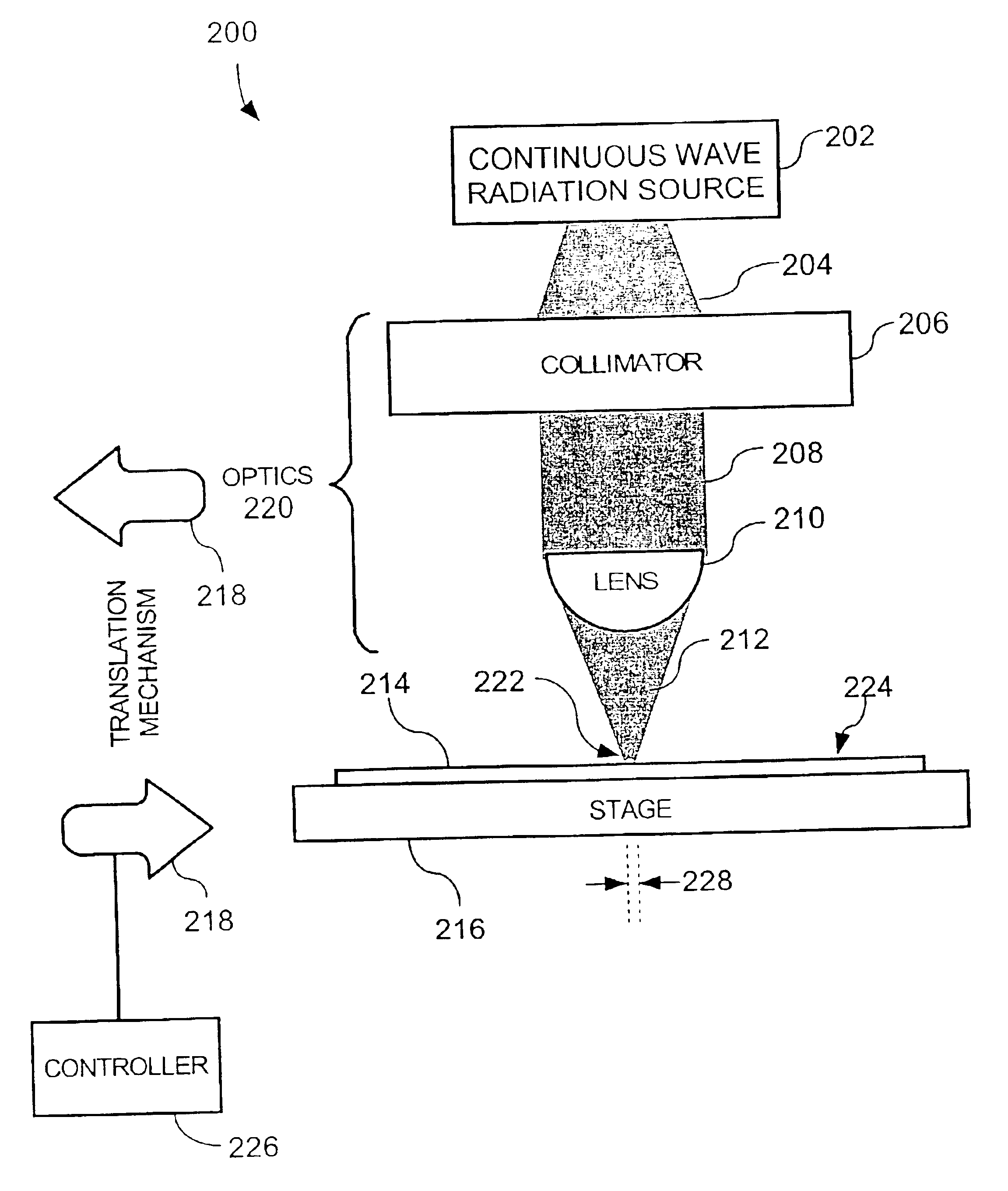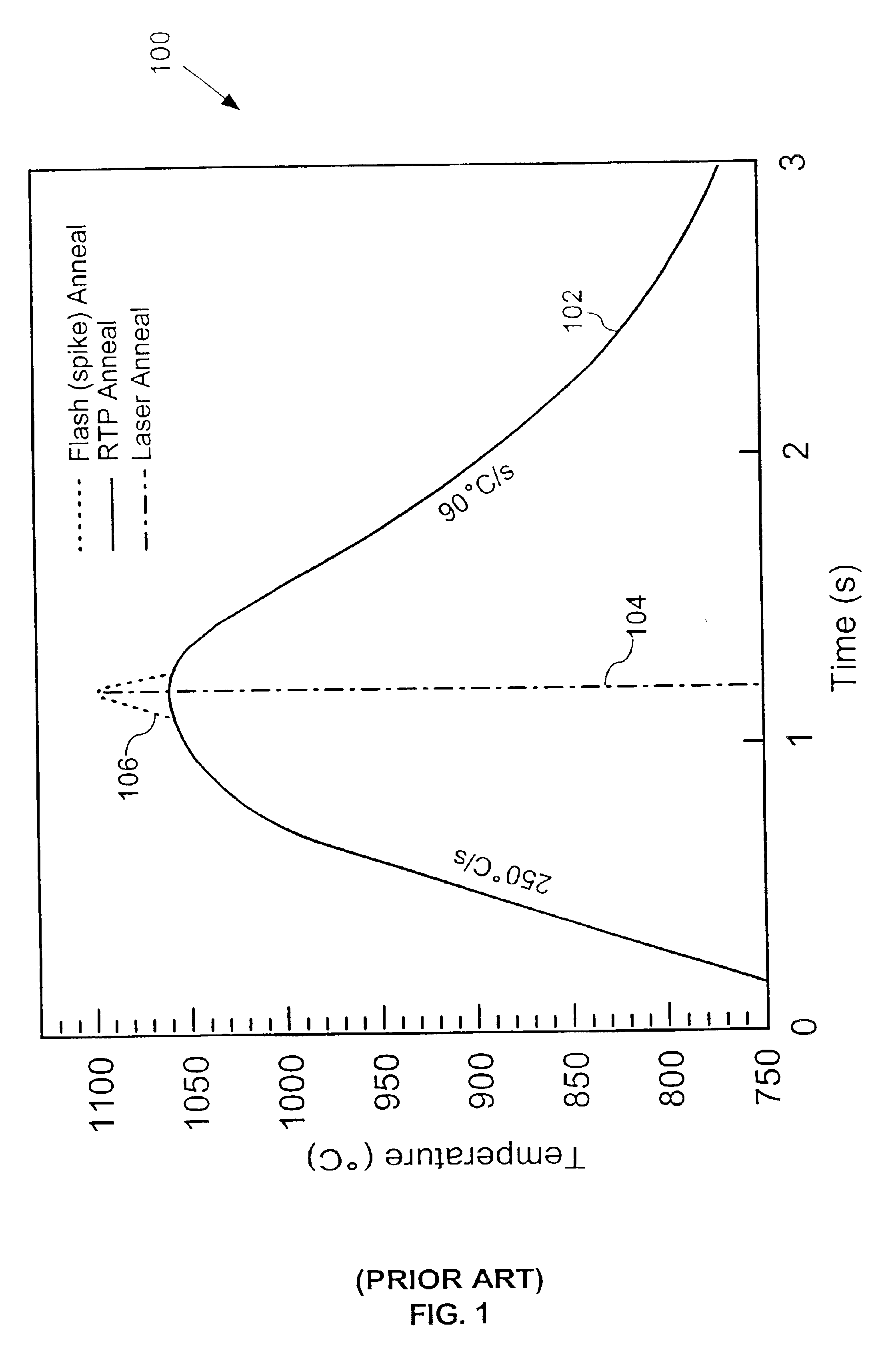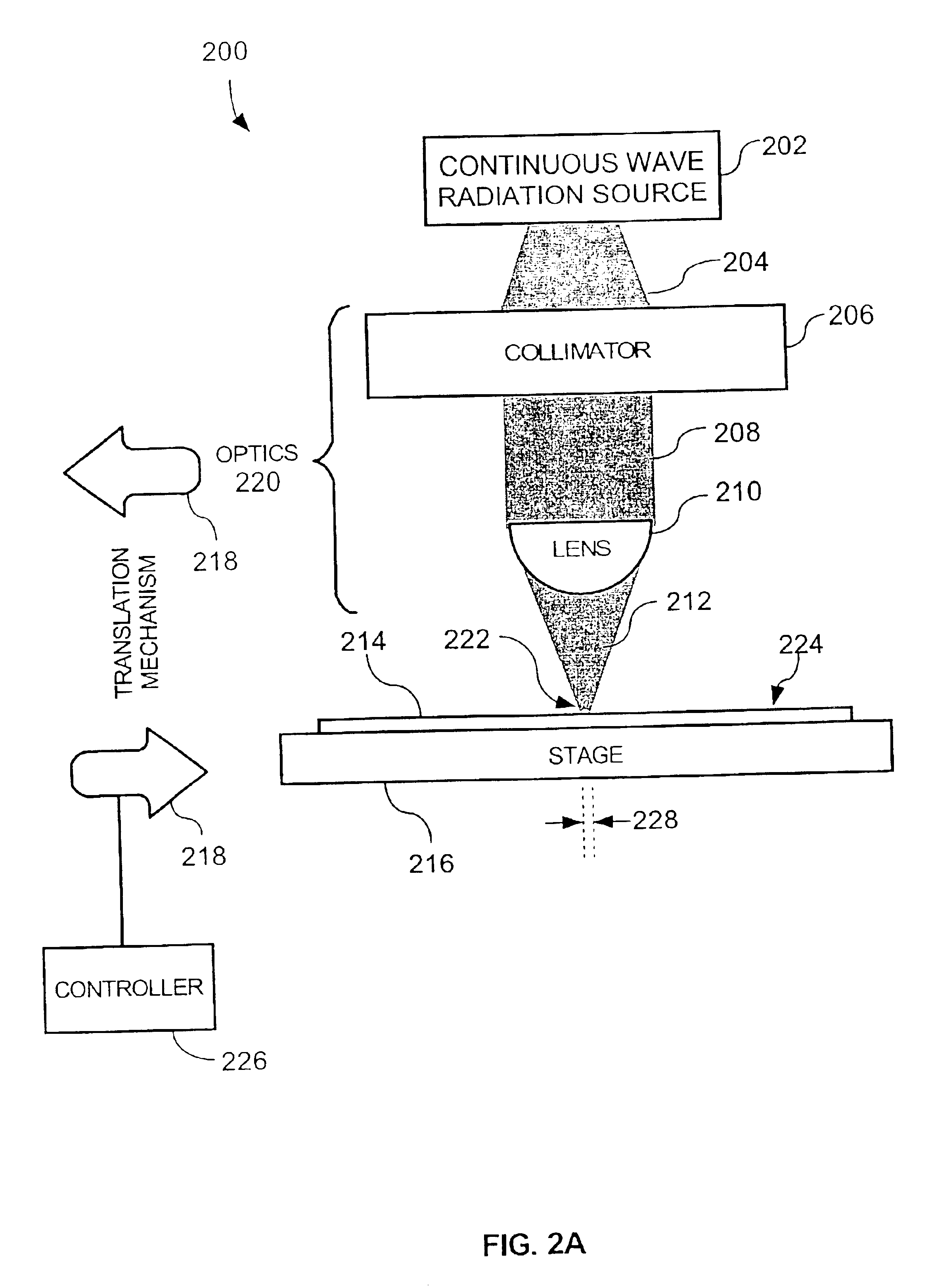Thermal flux deposition by scanning
a scanning and flux technology, applied in the direction of manufacturing tools, solid-state diffusion coating, welding/soldering/cutting articles, etc., can solve the problems of exposing the substrate to elevated temperatures for too long, slow ramping of the temperature of the substrate, etc., to reduce the total radiated power requirement, and accelerate the decomposition of reactants
- Summary
- Abstract
- Description
- Claims
- Application Information
AI Technical Summary
Benefits of technology
Problems solved by technology
Method used
Image
Examples
Embodiment Construction
[0045]FIG. 2A is a side view of an apparatus 200 for thermally processing a substrate, according to an embodiment of the invention. The thermal process is any thermal process that requires the characteristics of the invention described below. Exemplary embodiments of such a thermal process includes thermal annealing of substrates or thermal processes used in Chemical Vapor Deposition (CVD), both of which will be described throughout the remainder of the Figures.
[0046]The apparatus 200 comprises a continuous wave electromagnetic radiation source 202, a stage 216 configured to receive a substrate 214 thereon, and optics 220 disposed between the continuous wave electromagnetic radiation source 202 and the stage 216.
[0047]In a preferred embodiment, the substrate 214 is any suitable substrate, such as a single crystal silicon substrate; silicon on insulator (SOI); Silicon Germanium or alloys thereof; glass or quartz substrate with a silicon layer thereon, as used for manufacturing thin f...
PUM
| Property | Measurement | Unit |
|---|---|---|
| power | aaaaa | aaaaa |
| power | aaaaa | aaaaa |
| power | aaaaa | aaaaa |
Abstract
Description
Claims
Application Information
 Login to View More
Login to View More - R&D
- Intellectual Property
- Life Sciences
- Materials
- Tech Scout
- Unparalleled Data Quality
- Higher Quality Content
- 60% Fewer Hallucinations
Browse by: Latest US Patents, China's latest patents, Technical Efficacy Thesaurus, Application Domain, Technology Topic, Popular Technical Reports.
© 2025 PatSnap. All rights reserved.Legal|Privacy policy|Modern Slavery Act Transparency Statement|Sitemap|About US| Contact US: help@patsnap.com



